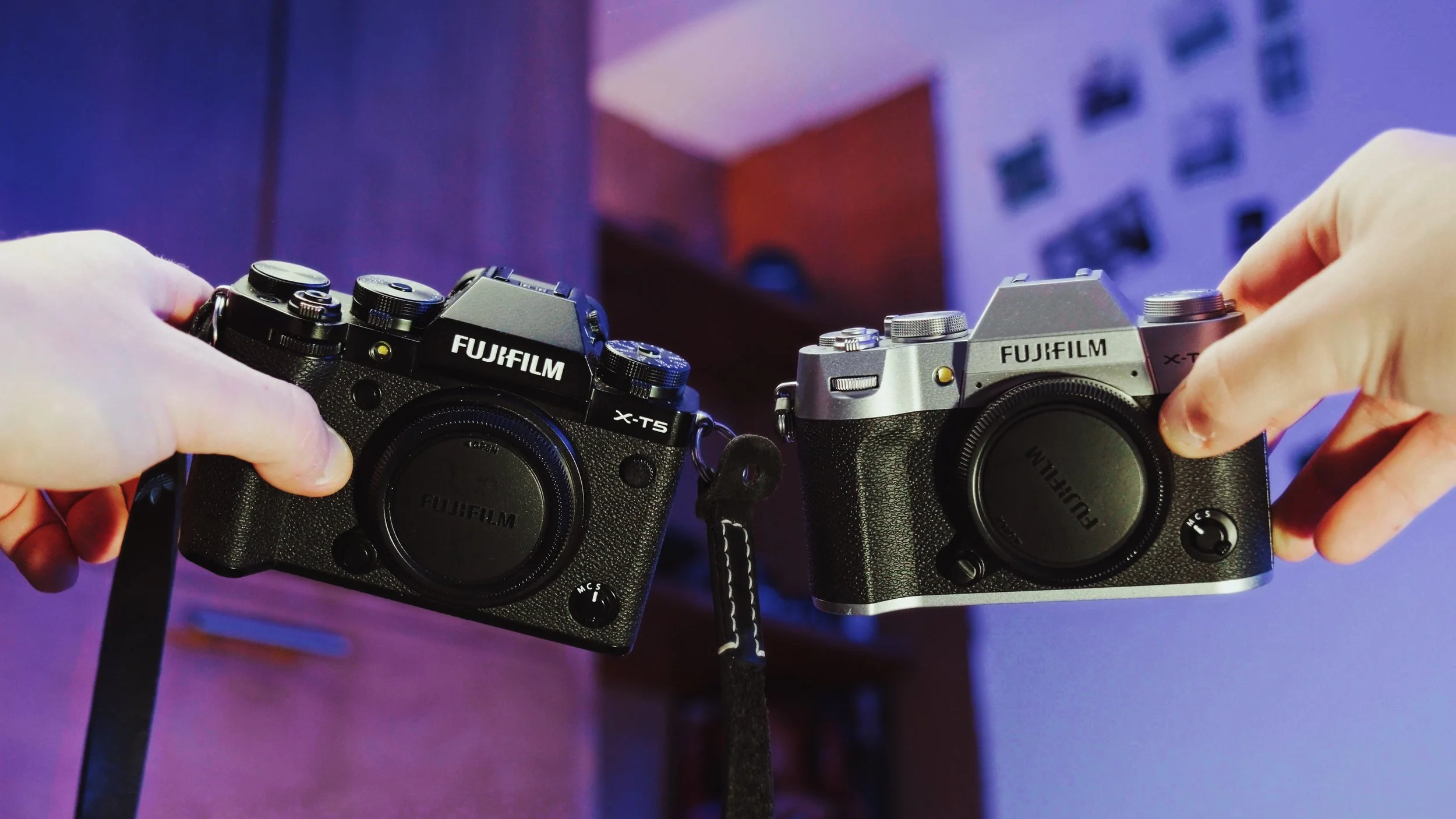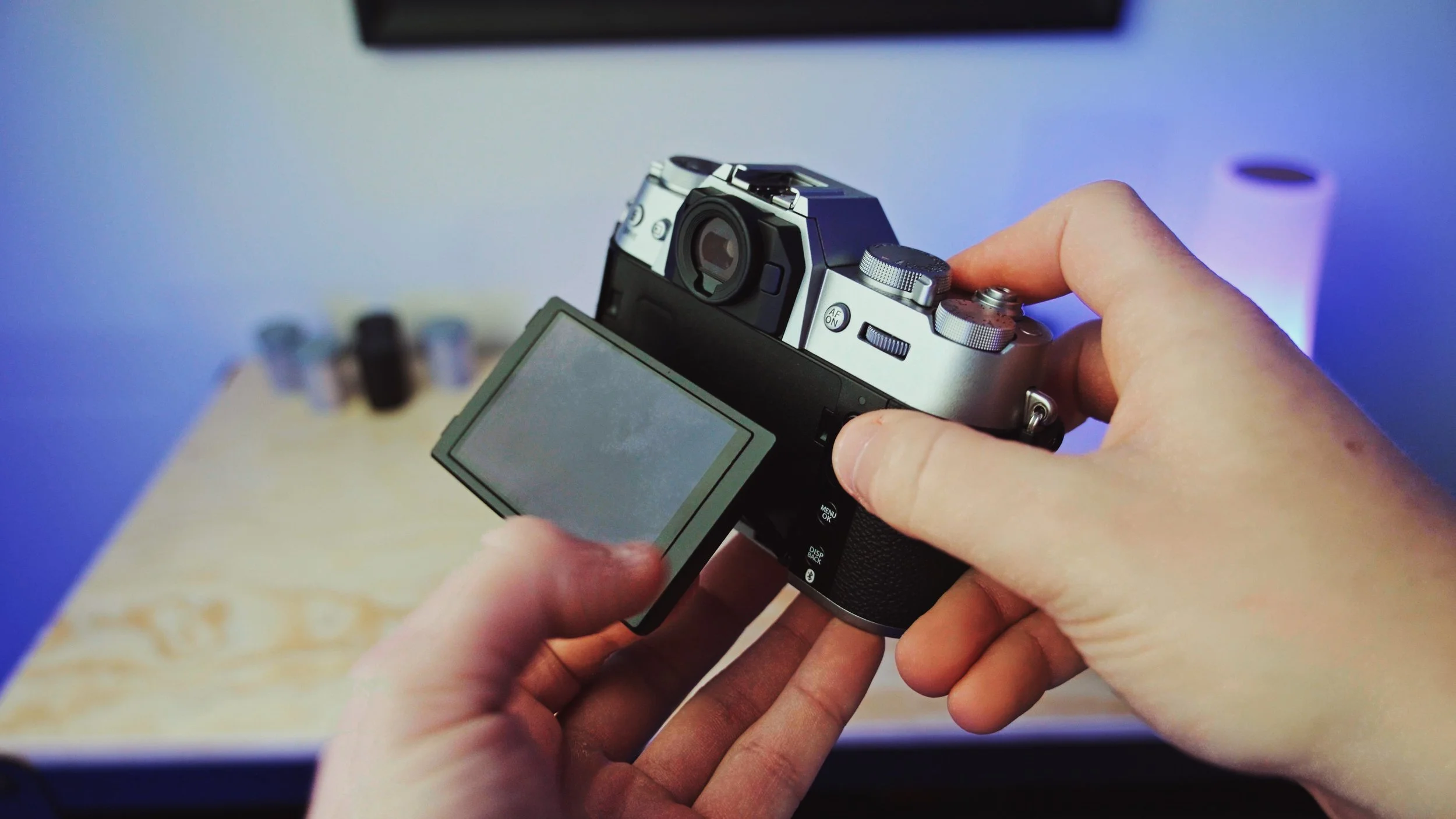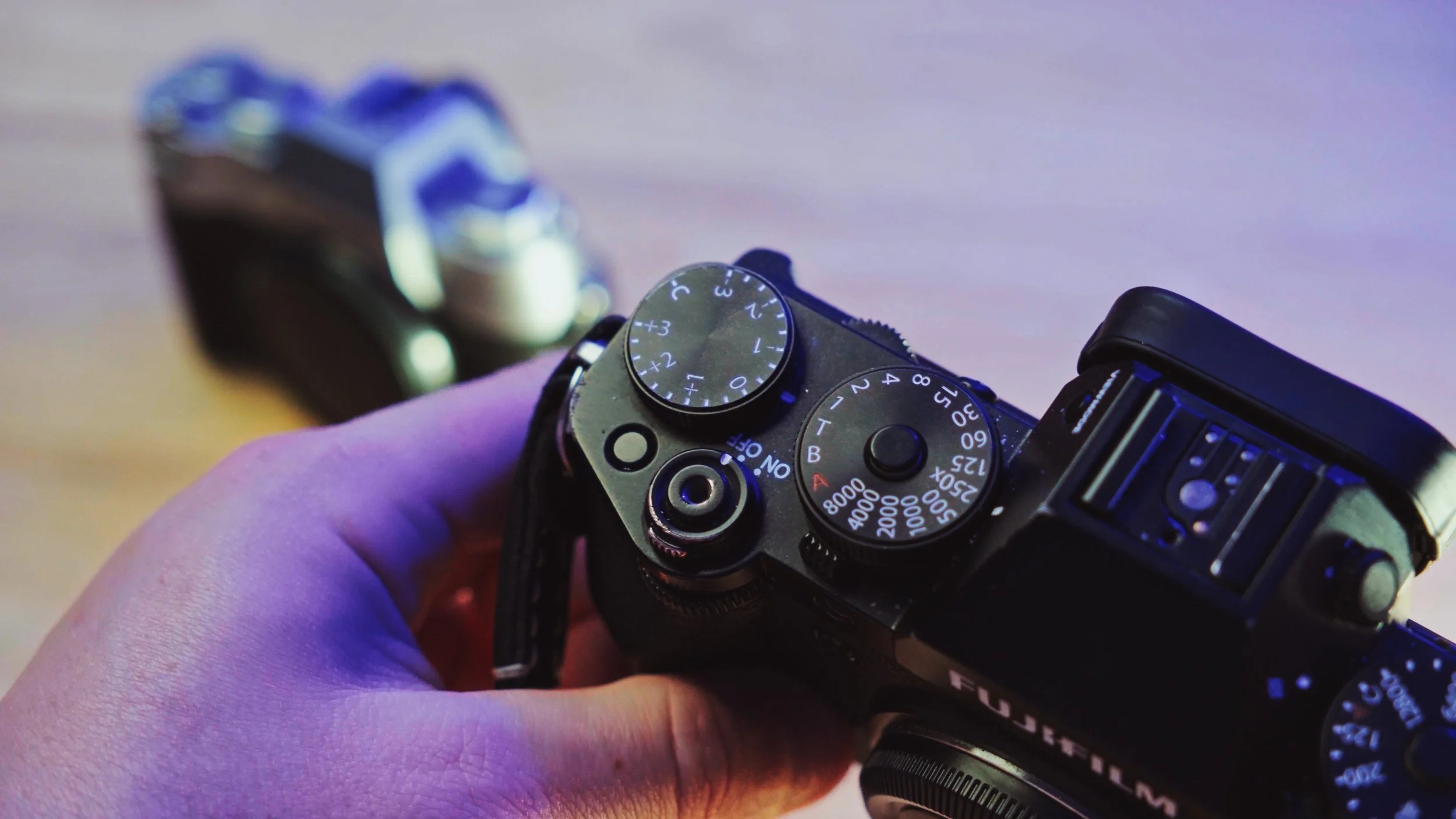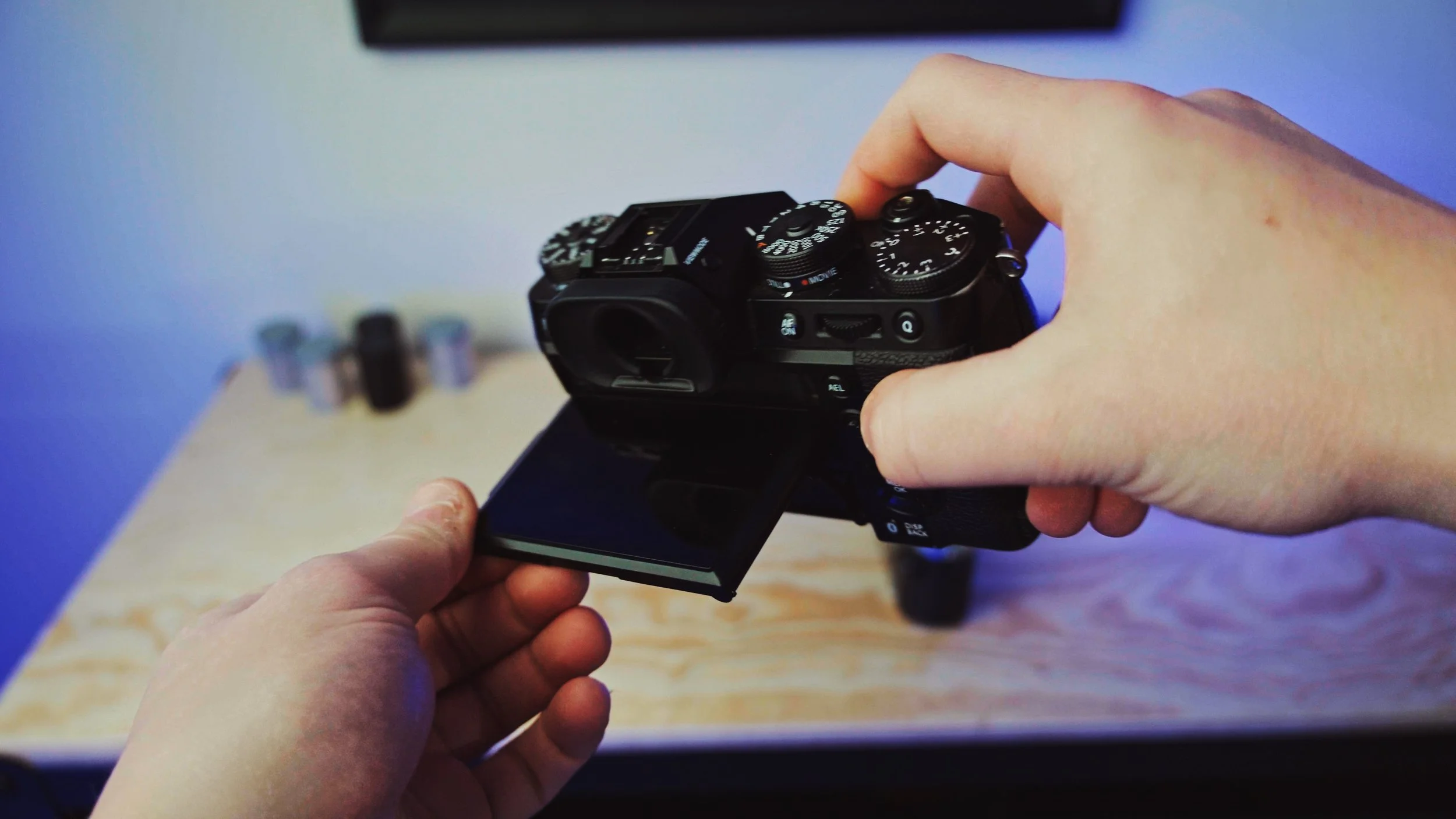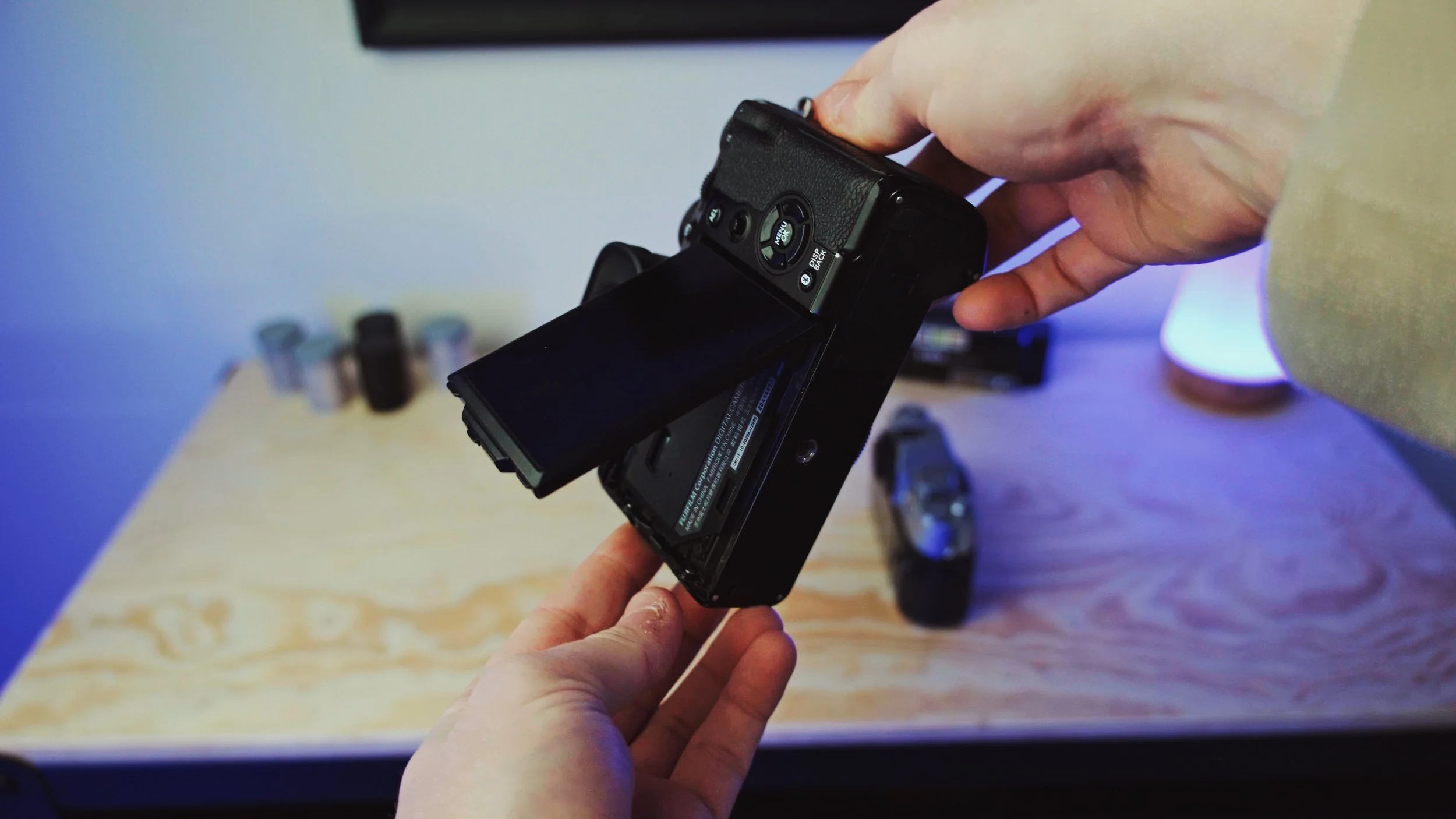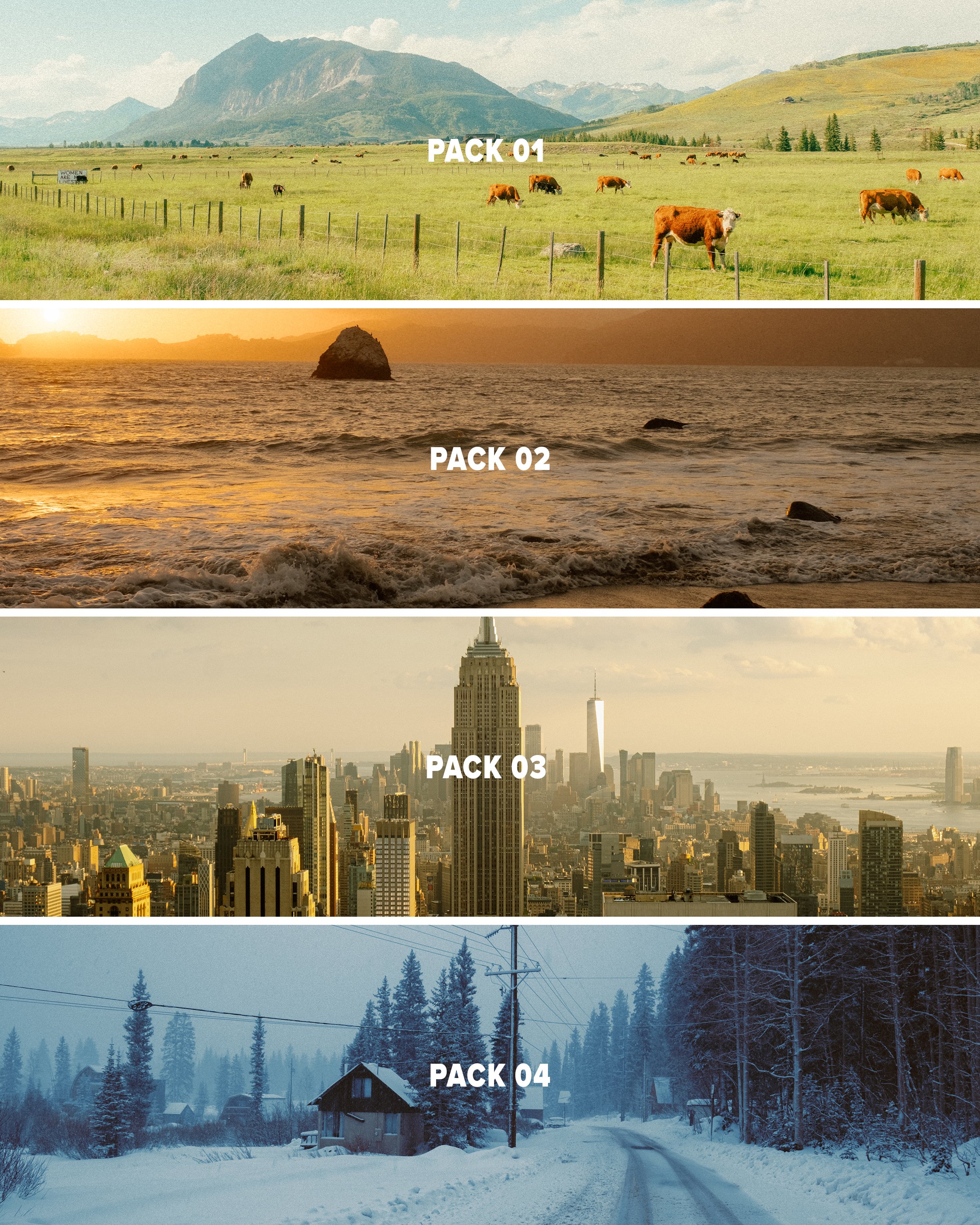Fuji X-T5 vs. X-T50: Which is better?
This post contains Amazon affiliate links. If you make a purchase through these links, I may earn a small commission at no additional cost to you.
FUJI X-T50 vs. X-T5 – Why I Chose the X-T5
Introduction
Back in September 2024, I picked up the Fuji X-T5. However, I seriously considered getting the X-T50 instead. At the time, the X-T50 was brand new—only about five or six months old since its release in May 2024. It was cheaper and had nearly identical internal specs to the X-T5.
On paper, these cameras are very similar—at least from an image quality perspective, but I never choose a camera solely based on specs or image quality. A camera can produce the sharpest, highest-resolution image possible, but if I don’t enjoy using it, I won’t buy it—simple as that.
For me, the experience of using a camera matters most. How does it feel in my hands? How does it fit into my workflow? Can I justify the cost based on my needs? These are the questions I ask when deciding whether to invest in new gear.
Ultimately, the X-T5 made more sense for me, even with the price difference. After using it for a few months, I can confidently say I made the right choice—at least for my needs. That said, I completely understand why the X-T50 exists, and for many photographers, it might be the better option.
Now, just a note-this blog is NOT a technical review. I’m a photographer first, and I use cameras based on how they fit into my real-world shooting experience. So, rather than breaking down specs line by line, or doing image analysis or whatever, I’ll just share my hands-on opinions of both cameras, explain why I chose the X-T5, and hopefully help you decide which one makes more sense for you.
Why I Didn’t Choose the X-T50
Images above taken on a recent trip to Florida using Fujifilm X-T50
Collectively, I’ve spent a couple of months using the X-T50, primarily for street photography and travel work. When it came time to choose between the X-T50 and the X-T5, it was actually a tough call. At $1,400, the X-T50 was significantly cheaper while offering the same 40MP sensor and X-Processor 5 as the X-T5.
In many ways, the X-T50 is a streamlined, compact Fuji camera with flagship-level internals—in my opinion, its a pretty good deal. But after spending time with it, I realized that the biggest differences between these two cameras come down to physical design and ergonomics, which ultimately influenced my decision to go with X-T5.
Size & Lack of Grip
The X-T50 has a rounded off design whereas the X-T5 has a more traditional body build as expected of the X-T system
The X-T50 is slightly smaller and lighter than the X-T5. For some, this is a positive—it makes for a great everyday carry or travel camera. While I don’t necessarily see the smaller size as a negative, I personally prefer the X-T5’s more robust feel.
Lack of grip on the X-T50
Although the weight difference isn’t significant, the X-T5 has a more solid, balanced presence in the hand. The X-T50 has a more rounded-off body design, which I found harder to grip, especially during long days of shooting. For my shooting style, the X-T5 just feels more comfortable to hold for extended periods.
tHE nEW Film Simulation Dial
Fujifilm has a strong community of straight-out-of-camera (SOOC) shooters who love crafting film simulation recipes. To cater to this audience, Fuji introduced a new Film Simulation dial on the X-T50.
Personally, I didn’t use this dial much. In fact, I really missed the standard ISO dial, which is usually in that spot.
Since Fujifilm cameras have limited dial space, dedicating an entire dial to film simulations meant they had to remove the ISO dial. This won’t be a problem for everyone, but for me—someone who shoots in RAW almost 100% of the time and manually controls every setting—losing the physical ISO dial was a big deal. Instead of a quick adjustment, I had to dive into electronic menus to set my ISO, which slowed down my workflow.
If you primarily shoot JPEGs and enjoy experimenting with Fuji’s film simulations, you might find the new dial useful. But for my shooting style, I prefer having direct physical control over the entire exposure triangle.
Lack of D-Pad
X-T50 does not have a d-pad on the back
The X-T50 doesn’t have a traditional D-pad on the back—it relies solely on a small joystick for menu navigation.
I don’t mind this too much, but for photographers who disable touchscreen functionality (which I do), navigating solely with the joystick might feel a bit limiting.
Screen Articulation
The X-T50 has a basic single-axis tilt screen, which works fine in most situations. However, I prefer having at least two axes of rotation so I can comfortably shoot from high and low angles in both landscape and portrait orientations.
The X-T5’s screen offers significantly more flexibility, making it easier to compose shots in challenging scenarios. While I could work around the X-T50’s limited tilt, having more articulation makes a difference in my workflow, especially when shooting dynamically from different perspectives.
My THOUGHTS ON THE X-T50
None of these factors are outright cons—they’re simply differences that may or may not matter to different photographers. The X-T50 is an excellent camera, but there were some specific features that made me choose the X-T5.
Why I Chose the X-T5
Even though the X-T5 was more expensive at $1,700, my past experience with the X-T3—and my time testing the X-T4 and X-T5—showed me that the extra cost was an investment in a shooting experience that suited me better. Here’s why:
Ergonomics
The X-T5’s deeper grip made it significantly more comfortable to hold, especially during long days of shooting. This was a huge factor for me, as I often walk around for hours with my camera in hand.
Standard Dial Layout
Physical ISO dial on the Fujifilm X-T5
The standard Shutter Speed & Exposure Compensation dials on the Fujifilm X-T5
The X-T5 retains Fuji’s traditional dial setup, including the ISO dial, which I prefer. Having full physical control over the exposure triangle enhances my shooting experience and keeps my workflow smooth and intuitive.
Does the Fuji X-T5 Have A Tilt Screen?
The X-T5’s screen can tilt in three different directions, offering much more versatility for composing shots. This flexibility was a game-changer for me, making it easier to shoot from creative angles.
Is the Fuji X-T5 Weather Sealed?
The X-T5 is weather-sealed, whereas the X-T50 is not. Since I frequently shoot in rainy or snowy conditions, weather resistance was an important factor in my decision. I wanted to be confident that my camera could handle tough environments without issue.
the Still/Movie Dial
One final feature that pushed me toward the X-T5 was the dedicated still/movie dial. When I’m out shooting for long periods, I appreciate being able to quickly switch between stills and video without digging into menus.
Final Thoughts
In my experience, both cameras are genuinely good, and I’d be happy with either.
The X-T50 offers an excellent balance of power and portability, making it a compelling option for many photographers.
For me, however, the X-T5 was the right choice. The ergonomics, dial layout, flexible screen, weather sealing, and still/movie dial all contributed to a shooting experience that felt more natural and intuitive for my needs.
If you’re deciding between these two cameras, consider your shooting style and what features matter most to you. Hopefully, my experience can help guide you toward the right choice for your own photography journey.
Purchase Here:
If you enjoy the look of my work and want to try out my editing style, I have preset packs available below! Supporting me through purchasing one of these packs is the best way to keep this blog ad-free and allow me to continue sharing editing tips.
Help support my work by exploring the available products below!
